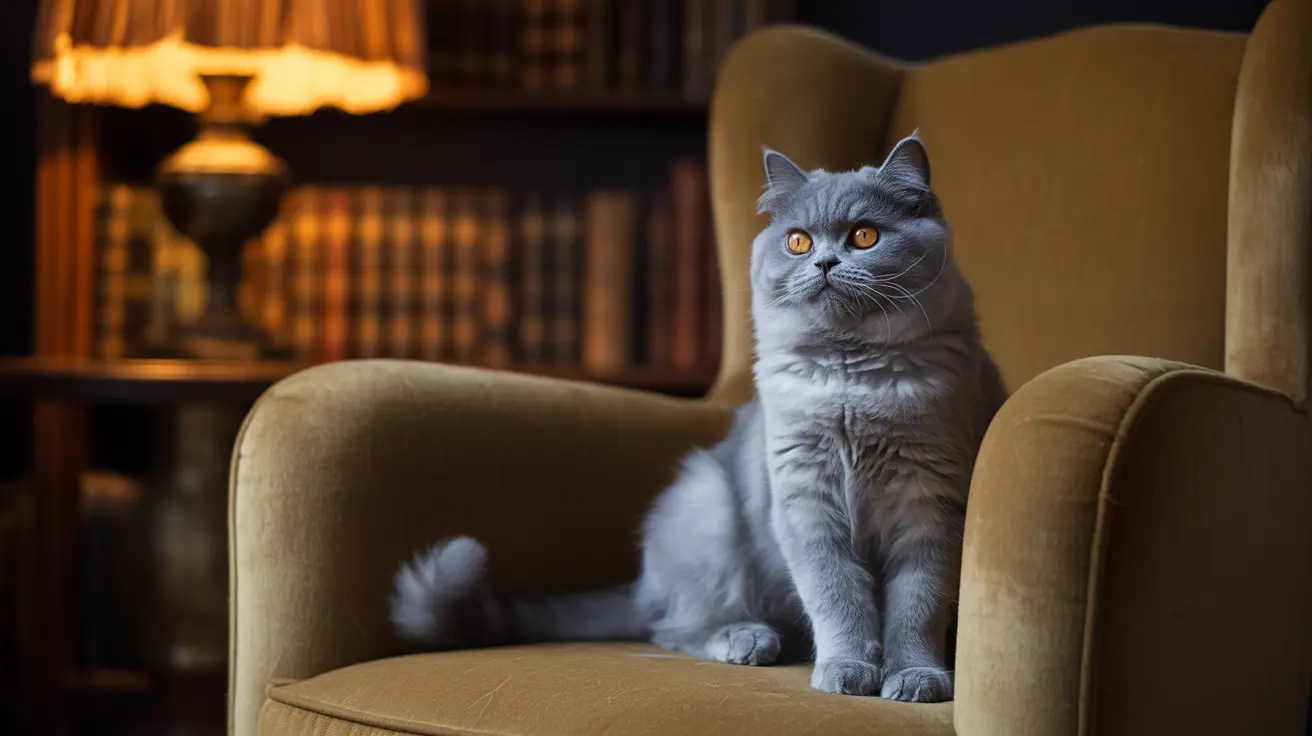Throughout history, cats have captivated human imagination, often being portrayed as mysterious creatures with supernatural connections. From ancient Egyptian reverence to medieval European fear, our feline companions have inspired both devotion and dread. But what's the truth behind these enigmatic animals? Let's explore the fascinating intersection of myth and reality when it comes to cats' supposedly "demonic" nature.
In this comprehensive guide, we'll examine the historical origins of cat-related superstitions, decode seemingly mysterious behaviors through scientific understanding, and separate fact from fiction regarding our feline friends' true nature.
The Historical Origins of "Demonic" Cat Myths
Medieval Europe played a significant role in establishing cats' association with the supernatural, particularly during the witch-hunting era. Black cats were often considered witches' familiars, leading to widespread persecution of both cats and their owners. This period marked a dramatic shift from the reverence cats enjoyed in ancient Egypt, where they were worshipped as divine beings.
Japanese folklore introduces fascinating cat-demon myths, including the Bakeneko and Kasha - supernatural felines believed capable of shape-shifting and various magical feats. These cultural narratives reflect humanity's complex relationship with cats and our tendency to attribute supernatural explanations to their unique behaviors.
The Science Behind Mysterious Cat Behavior
Modern science offers logical explanations for behaviors often misinterpreted as "demonic." Cats possess extraordinarily keen senses that far exceed human capabilities. Their ability to detect ultrasonic frequencies, see in near-darkness, and perceive subtle environmental changes can make their reactions seem inexplicable to human observers.
When cats appear to stare at "nothing" or suddenly become agitated, they're typically responding to stimuli beyond human perception - perhaps a high-frequency sound, a subtle movement, or even changes in electromagnetic fields. These natural behaviors, while sometimes unsettling to humans, have nothing to do with supernatural abilities.
Understanding "Evil" Cat Behaviors
What humans might interpret as malicious or "evil" behavior in cats usually stems from natural instincts and responses. Hissing, scratching, and aggressive displays are defensive mechanisms triggered by fear, stress, or territorial instincts. Cats' hunting behaviors and seemingly calculated actions reflect millions of years of evolutionary adaptation rather than any malevolent intent.
Even the infamous "midnight zoomies" or sudden mood changes have biological explanations, often related to cats' natural crepuscular activity patterns or responses to environmental stimuli. Understanding these behaviors through a scientific lens helps dispel supernatural misconceptions.
The Impact of Pop Culture on Cat Perception
Modern media continues to perpetuate the image of cats as mysterious or potentially sinister creatures. From horror movies to internet memes, the "evil cat" trope persists in popular culture. However, this portrayal often serves entertainment purposes rather than reflecting any factual basis about feline nature.
Contemporary research consistently shows that cats are capable of forming strong, positive bonds with humans and display genuine affection through their own species-specific behaviors. Their independence and unique communication styles might seem alien to human expectations but are perfectly normal for their species.
Frequently Asked Questions
Why are cats often associated with being demonic or evil in myths and folklore?
This association stems from historical superstitions, cats' nocturnal nature, and their independent behavior patterns that seemed mysterious to ancient cultures. Medieval religious persecution and witch trials particularly contributed to these negative associations.
Can cats actually sense evil spirits or supernatural forces in their environment?
No scientific evidence supports cats' ability to detect supernatural forces. Their seemingly mysterious reactions are typically responses to natural stimuli their keen senses detect, such as ultrasonic sounds, subtle movements, or environmental changes imperceptible to humans.
What historical and cultural reasons explain the superstition that black cats bring bad luck?
This superstition primarily originated in medieval Europe during witch hunts, where black cats were believed to be witches' familiars. The association varies culturally - in some countries, black cats are actually considered lucky.
Why do cats sometimes stare at seemingly empty spaces or act scared for no clear reason?
Cats have highly developed senses that can detect things humans cannot, including ultraviolet light, high-frequency sounds, and minute movements. Their reactions to these stimuli can appear mysterious to humans but have natural explanations.
How can understanding cat behavior help dispel myths about cats being demonic or evil?
Learning about cats' natural behaviors, instincts, and sensory capabilities helps explain seemingly mysterious actions through science rather than superstition. This understanding promotes better human-feline relationships and dispels unfounded fears.
Conclusion
While centuries of mythology and superstition have painted cats as potentially demonic creatures, science reveals them to be fascinating animals with natural behaviors that can be fully explained through biology and evolutionary adaptation. Understanding cats' true nature not only helps dispel harmful myths but also enables better care and appreciation for these remarkable companions.






